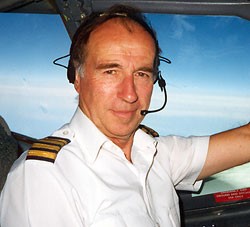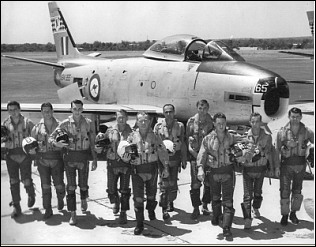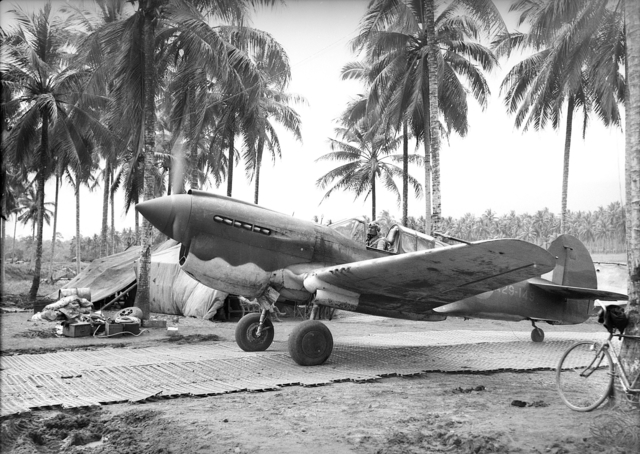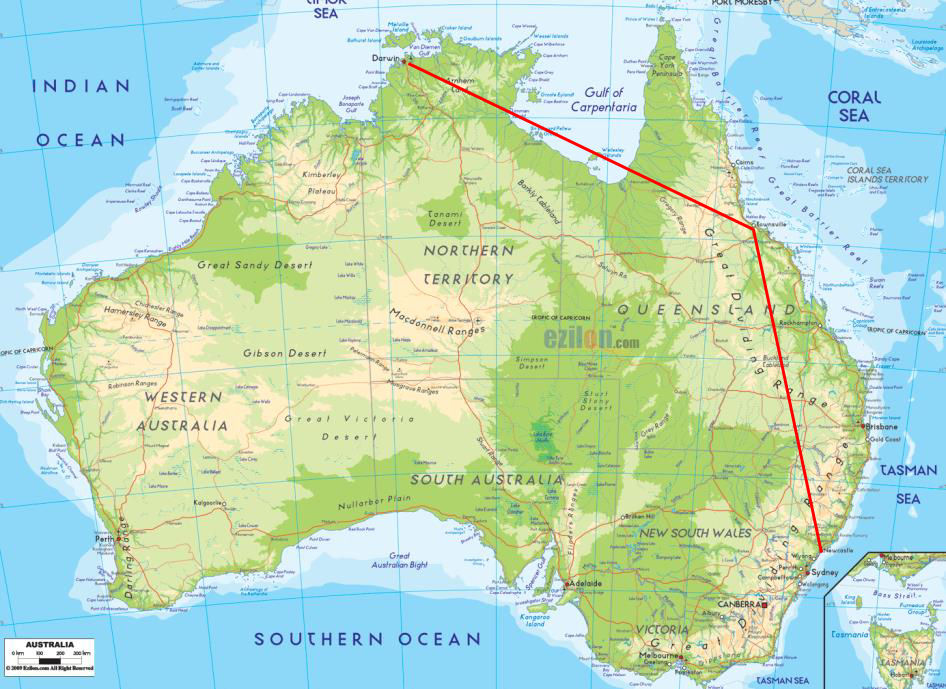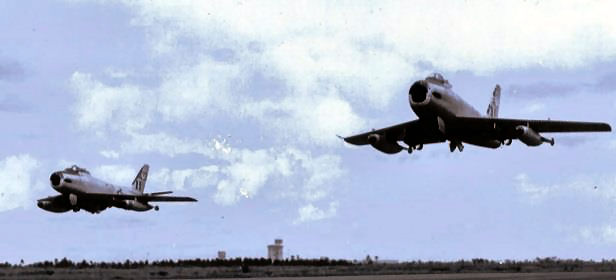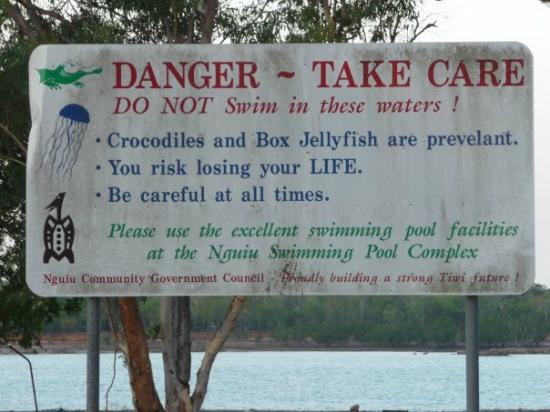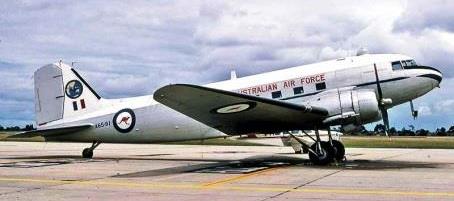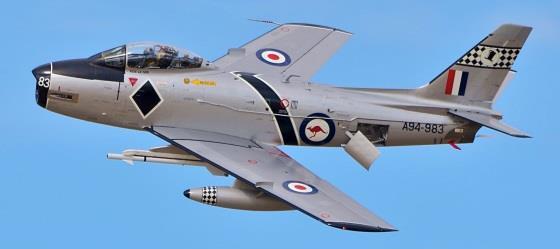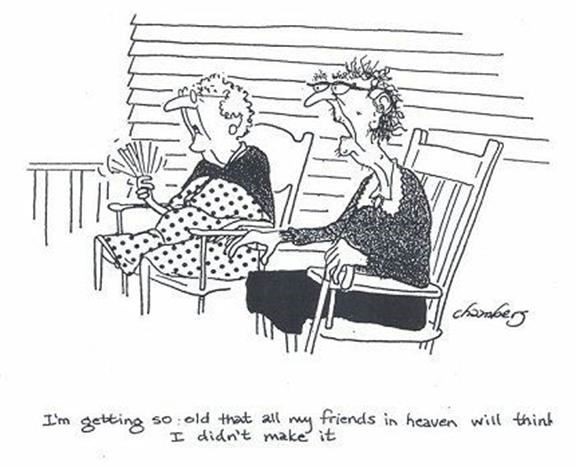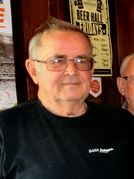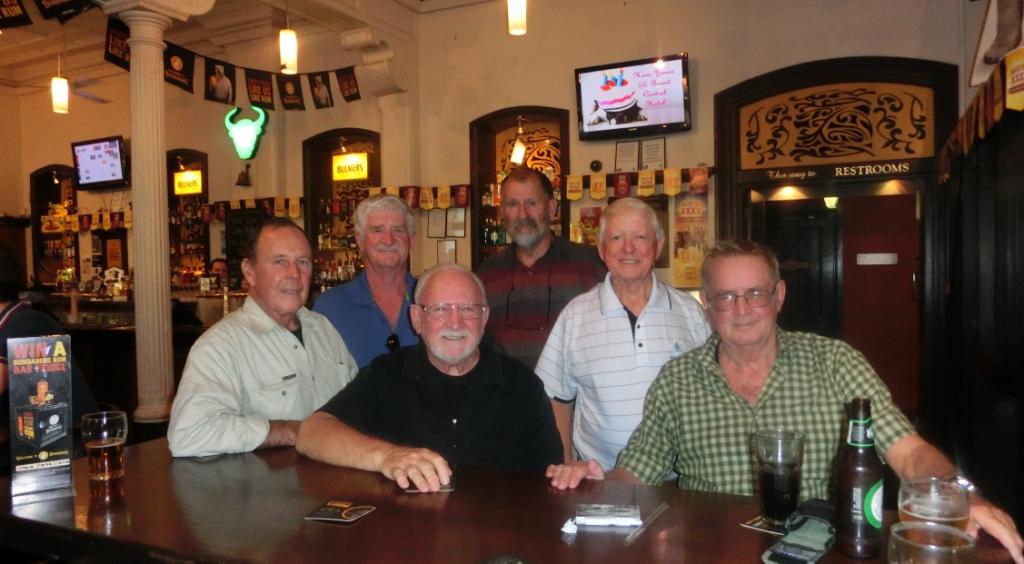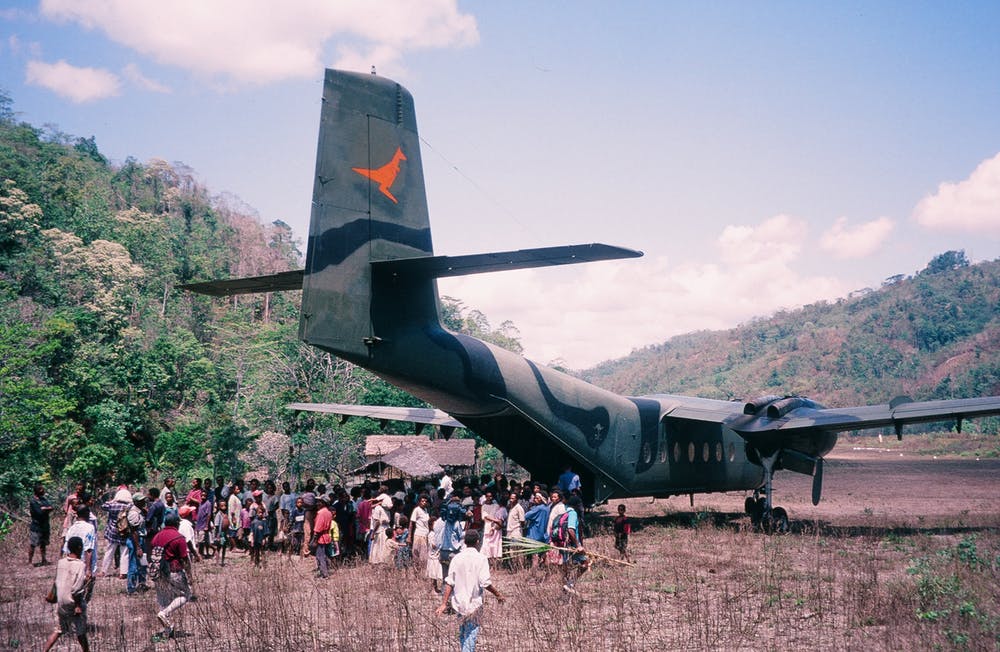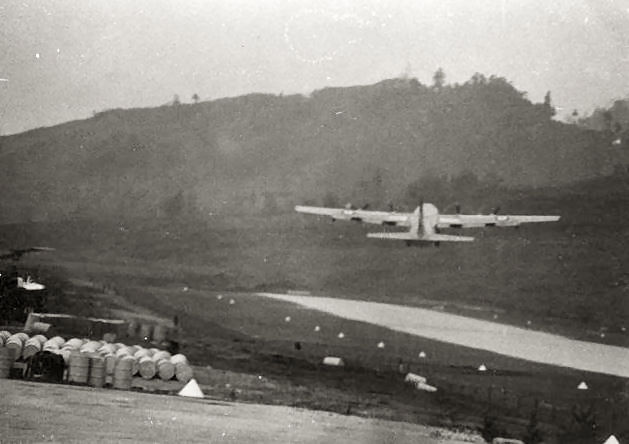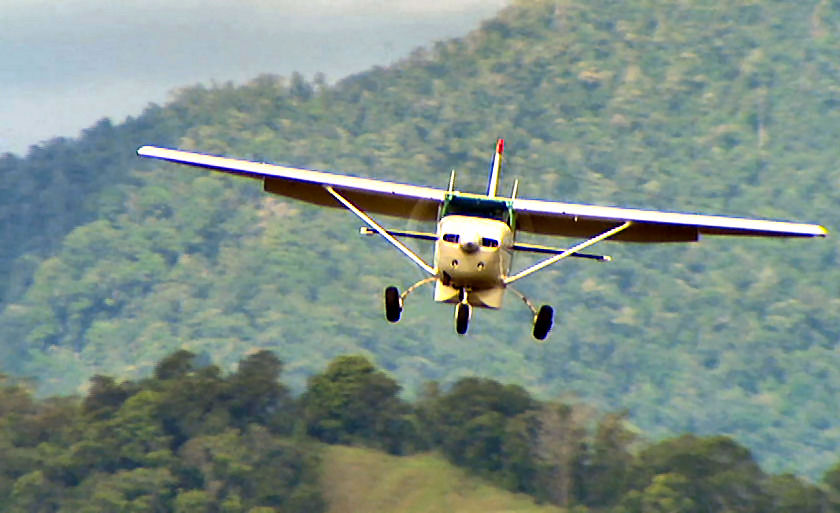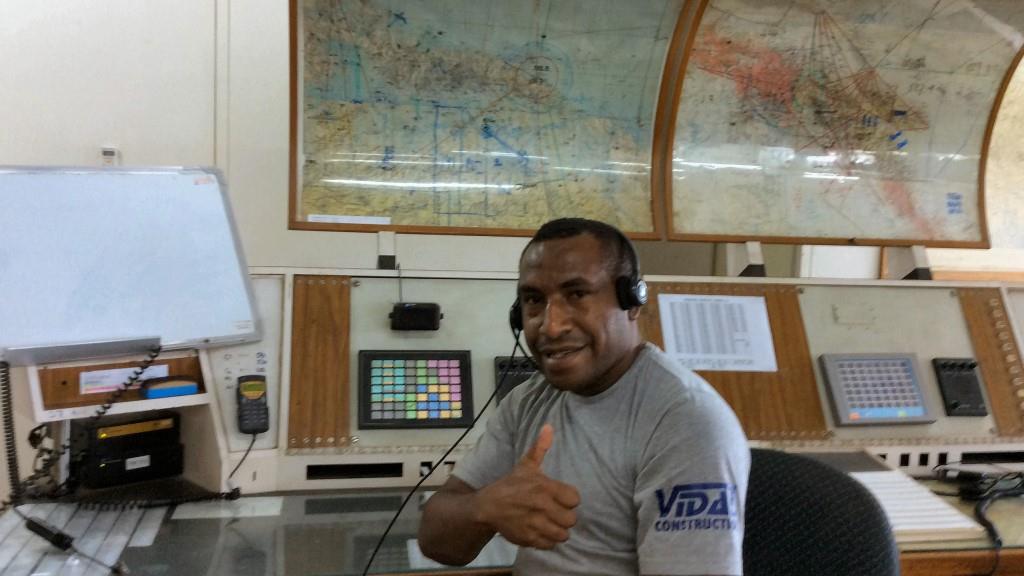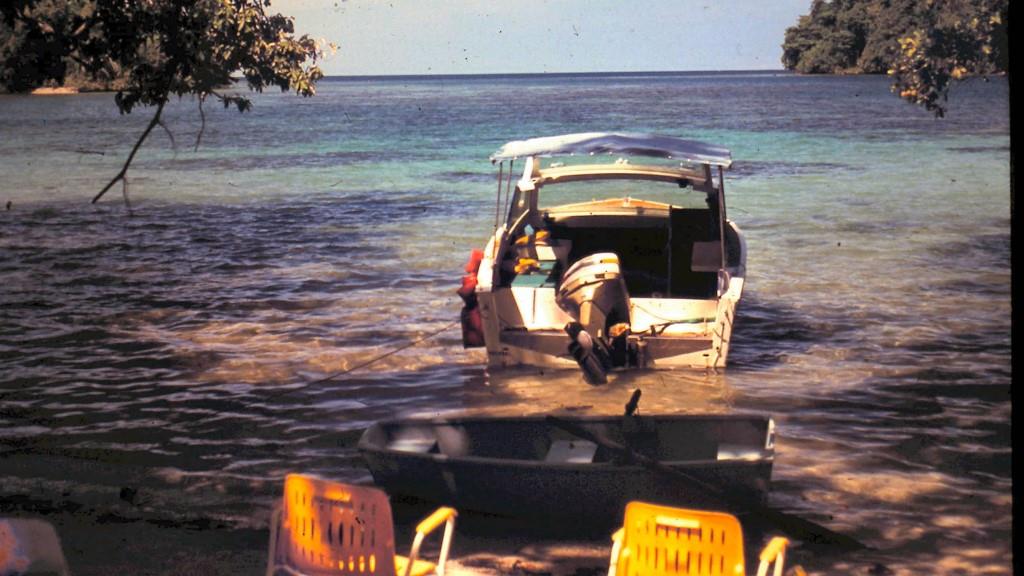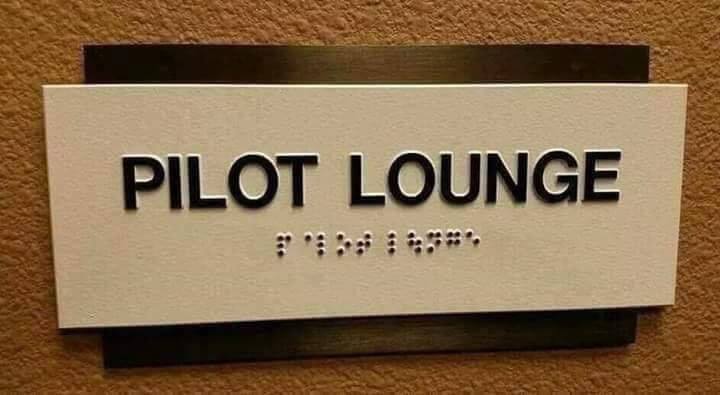|
|
||
|
||
|
Privacy Policy | Editorial Policy | Profit Policy | Join the Association | List of Members | Contact us | Index | Links |
||
|
Back Go to page: 1 2 3 4 5 6 7 8 9 10 11 12 13 14 15 16 17 18 19 20 Forward
|
||
|
John Laming Aircraft and other stuff. |
||
|
|
||
|
75 Sqn’s lolly drop.
John says: The following was written by former Squadron Leader Maurie Baston, AFC, an old mate of mine from 1969 days when he was CFI of CFS at East Sale. He became the chief pilot of Air Nauru in the 1970’s and he gave me my first 737 job with Air Nauru. In later years he became a senior management pilot with the then CAA and was in charge of the SE Area of CAA. He is 83 and now lives in Canberra. I visited him in Canberra recently and he gave me the OK to send it to you. Would it be possible to place him on the distribution list for your magazine which he says is the best he has seen?
PROLOGUE - HEADER
Fighter aircraft are designed and built to be fighting machines. The pilots who fly them are highly skilled in delivering many different weapons, Bombs, Rockets, Missiles, 30 mm cannon, but killing was not the aim when we bombed a Northern Territory airport in the early 1960’s. As the wingman in a fighter pair for this mission it was an experience I have held in my memory for decades.
“Our squadron, the RAAF’s No 75 Fighter Squadron, had been doing rapid deployment exercises for some time - fly from our base at Williamtown in New South Wales, through Townsville in Queensland, then on to Darwin in the Northern Territory. Darwin aerodrome is a memorable city airport in Australia being the target of the first attack by Japanese aircraft in World War II.
With the battle scars on the old hangars where the Japanese aircraft strafed, with little opposition from us, it has remained a lasting place in our country’s history.
75 Sqn History.
Formed in Queensland in March 1942, No 75 Squadron was to become one of the RAAF's most famous Units. Equipped with American-built Kittyhawk fighters and with only one week's training, the Squadron flew to New Guinea. On the afternoon of their arrival, two Kittyhawks shot down a Japanese bomber, while the next day saw the Squadron destroy twelve enemy aircraft during an attack on Lae airfield. After this most successful beginning, No 75 Squadron went on to extract a heavy toll on the Japanese.
Continuous combat took its toll on both men and machine and after six weeks of fighting, a battle weary 75 Squadron, with just one serviceable Kittyhawk left, was relieved and returned to Australia. During its first forty-four days of combat, 75 Squadron destroyed thirty-four enemy aircraft and damaged a further forty-four. Sadly, the Squadrons heroic defence of Port Moresby did come at a terrible price - twelve pilots were killed and many more wounded.
A replenished 75 Squadron returned to New Guinea in August and joined with No 76 Squadron in the defence of Milne Bay. Soon after their arrival, a Japanese invasion force steaming towards Milne Bay came under attack from Squadron Kittyhawks modified to carry bombs. Although a number of ships were damaged, the Japanese convoy sailed into Milne Bay on the 24 August, disembarking their troops before dawn. At first light, the Kittyhawks began shuttle attacks against landing barges, stores and troops. Despite torrential rain and appalling conditions ground personnel worked tirelessly to refuel and rearmed the Kittyhawks. Although Australian ground forces were contesting every yard, the enemy was soon so close that the Kittyhawks' guns were firing before their undercarriages had retracted.
Gradually the Australians gained the upper hand and when it became apparent to the Japanese that the battle was lost, Japanese ships, under the relative protection of darkness, entered Milne Bay and embarked what troops and equipment they could.
After playing its part in the first defeat of Japanese ground forces in the Pacific War, 75 Squadron, operating from a succession of bases, continued to attack Japanese garrisons for the duration of the war.
The Squadron's first permanent deployment after the war saw 75 Squadron personnel, operating Royal Air Force Vampire jet fighters in defence of the Mediterranean island of Malta. After the Squadron's return to Australia in 1955, the Vampires were soon replaced by the highly manoeuvrable Sabre. This popular aircraft was in turn replaced by the supersonic Mirage in August 1965. In 1967, 75 Squadron deployed to Malaysia and after sixteen years in Butterworth, Malaysia, returned to Australia, and was based at Darwin to await conversion to the F/A-18 Hornet and eventual relocation to RAAF Base Tindal in October 1988.
Today, 75 Squadron is the largest F/A-18 unit in the Air Force. The squadron's remote location requires self-sufficiency, including large numbers of maintenance crews to maintain operational readiness. The pilots of 75 Squadron have few airspace restrictions and, with the Delamere Range only 100 kms away, they are able to train with a large variety of air-to-ground weapons. The suitability of northern Australia for training gives the squadron the opportunity to exercise regularly with air forces from Malaysia, New Zealand, Singapore and the United States. 75 Squadron have also had aircraft and personnel involved in recent operations as a component of the International Coalition Against Terrorism in Iraq, Afghanistan and the Indian Ocean.
Williamtown Townsville Darwin.
|
||
|
|
||
|
|
||
|
Darwin was where we conducted exercises and training for any possible threat from the north. At the time, our government was cautious as to the intentions of our northern neighbour, Indonesia, and so we were always kept at a high level of alert ready to convert from exercise mode to defend against a real threat. Our Sabres were the latest fighters at the time, supersonic, deeply swept wings with hydraulic powered controls to ensure rapid manoeuvrability through the whole speed envelope.
They were equipped to deliver rockets, bombs and cannon but recently we had been equipped with the heat-seeking Sidewinder missile where targets could be destroyed at ranges in excess of five miles. Of course, one had to have good eyesight to find a target at those ranges, especially at high altitudes where focussing was extremely difficult.
And so we navigated our way to Darwin and for the next few weeks we conducted our recurrent weapon training; air combat manoeuvres; bombing the range at Quail Island (20 Nms West of Darwin); multi aircraft simulated strikes on Gove (The Gove Peninsula is on the west coast of the Gulf of Carpentaria within Arnhem Land. The township of Nhulunbuy is the main commercial and service centre of the Peninsula and is 600 kilometres east of Darwin.) and other targets, all to maintain our defensive and offensive skills at a the highest level.
|
||
|
|
||
|
|
||
|
WORDS THAT ARE DIFFICULT TO SAY WHEN DRUNK:
Innovative
|
||
|
As time came for us to return to Williamtown our Commanding Officer, Wing Commander Des Murthy, a Korean War veteran, accepted an offer from the Base Commander, Group Captain Dixie Chapman, for a visit to the Bathurst Island Mission (West of Melville Island). The Mission was a catholic-run school staffed entirely by nuns without any male support.
In fact there was only one male resident on the island who was on the island when the Japanese bombed Darwin. He was the person who alerted the Darwin authorities of the impending Japanese attack as they passed overhead the island. Regrettably the advice was ignored.
Bathurst Island is 43 nms to the North West of Darwin with a short grass airstrip adjacent to the Mission. Our Sabres would be unable to land there and we were flown, courtesy of Dixie Chapman, in a Dakota to an amazing welcome of many school children who lined the airstrip as we landed.
The Mission accommodated only indigenous children from all ages up to and including primary school level. We disembarked and several nuns, with small children clinging to their scruffy muddied-bottomed habits, escorted us to the school. We took our place in a large room where the school choir sang a welcome song and later we were served afternoon tea. The dedication of the nuns and the reciprocal love from the children was obvious in the smiles and laughter of all the children and nuns.
‘Would you care for a short tour of the school,’ Sister Francine asked? Sister Francine was to be our escort for the CO and I for the visit as other nuns escorted our squadron people as we toured the school offices and classrooms. Sister Francine was all of 23 years of age and in her own words had chosen the life of a nun –‘simply because I love God and I am here to do His work.’ Such dedication!
Passing a small office where a nun was busy doing a stocktake we said a courteous hello. She went on to explain how they need to keep track of school books, stationary and all the administrative requirements like pens, paper and books that are always in short supply. Later, Sister Francine explained, ‘We are always short of the basics but we make do and do the best we can.’
Again, such dedication!
We left and flew back to Darwin ready to depart to Williamtown the next day with the admiration and wonderful memories of the Bathurst Island Mission fresh in our minds.
Back in Williamtown and “Ops Normal” the CO called me to his office. He said: ‘You wouldn’t know, that as a catholic, I have been supporting those in need in Africa for some time but now I have decided I should do something for those less fortunate closer to home. For your ears only, I have ordered twenty large tea chests for our own normal administrative needs but we can also include school items for the Mission school. When we get the boxes filled we can have them transported on our Herc support aircraft when we next exercise to Darwin. What do you think?’
Such thoughtfulness; a man with compassion and a great fighter pilot leader to boot. Without hesitation my answer was clear, ‘Great stuff Sir. Can’t wait to see it happen.’ About six weeks passed and our ‘Form Green Frag Order’ came through - deploy ASAP - so off to Darwin again. We departed in our aircraft and the Hercules, with our loaded stores, came along the next day and as arranged by the CO there was a Dakota ready to load the ‘stores’ for the school.
We got many ‘Thanks You’s’ but the real thanks was for the thought and action taken by the CO. The RAAF hierarchy never knew but I am sure they would have applauded such action. Words like ‘hero’ were spoken but we were not heroes we just had a CO who thought he could help the less fortunate. As co-incidence would happen, still In Darwin and two days before we were due to return to Williamtown we were both posted to new duties; the CO to a higher office; myself to undergo instructor training at the RAAF’s Central Flying School at East Sale In Victoria.
Yet again I was called to the CO’s office for another confidential briefing.
‘Before we leave tomorrow and as we won’t be back here again you and I are going to do a beat up this afternoon of the Mission. We’ll do a flyby; slow as we can; as low as we dare and ……..wait for it …..I have arranged for bags of lollies and chocolates to be loaded in the speed brake wells. When we are over the airfield we can select the speed brakes out …lollies for the kids; what do you think?
It didn’t matter what I thought, I was all for it. I just hoped we didn’t hurt anyne….an unlikely event! Amazing stuff. Great fun and doing something that a fighter aircraft would not normally do and to bring joy to the nuns and children at the Mission.
The speed brake wells had already been loaded and the speed brakes were closed, however, the start sequence needed slight modification. After engine start we would normally check the operation by cycling them out then in. This time there would be no checks. We didn’t want our earlier habits to cause an abort.
Lining up for take-off I thought of all the war-like sorties I had imagined and flown and smiled to myself we rolled down the runway. The CO nodded; gear selected up; radio channel change to radar frequency and we were on our way.
At 1,000 feet with only 43 miles to Bathurst Island we travelled at a sedate 180 kts. I thought, three miles a minute, a 14 minute trip as I moved into a loose attack formation and the CO lined up on the grass strip. I could see white habited nuns and children over the strip waving as we approached. “Speed Brakes Go” came the radio call and I saw lollies fall from the CO’s aircraft. As we pulled up in a steep wingover and looking back at the airstrip it was a wonderful sight to see…children and nuns on the airstrip retrieving lollies from the sky. But there was a down side to the operation. No chocolates fell from either aircraft as they melted from the engine heat and streamed along the fuselage of our aircraft. No doubt a big cleaning job but there were no complaints from our squadron colleagues.
So fighter aircraft don’t always have to be death-dealings machines - in the right hands they can bring joy and some happiness to those we can help.
Footnote:
Sister Francine and I corresponded for several years until I lost contact when she was transferred to another Mission. Twenty five years later as I walked to the airport terminal in Nauru, having flown an Air Nauru B-727 from Guam, a nun a approached me. She said, ‘There is someone over there who wants to meet you’ It was her ….Sister Francine!!!”
|
||
|
|
||
|
|
||
|
A superb feat of Airmanship re-visited.
Just under 40 years ago, before many of today’s pilots were even born, a wonderful feat of superb airmanship took place high over the Pacific between Fiji and Norfolk island. I remember it well as at the time I was piloting Boeing 737's of Air Nauru over nearby areas of the South Pacific. I was reminded of this when reading the PPRuNe Australian forum on the various theories surrounding the mysterious disappearance of Amelia Earhart in 1937 during her ill-fated long distance flight in her twin engine Lockheed from Lae, New Guinea to Howland Island in the Central Pacific.
The story goes thus: On 22 December 1978, a small Cessna 188 Agwagon aircraft, piloted by Jay Prochnow, became lost over the Pacific Ocean.
|
||
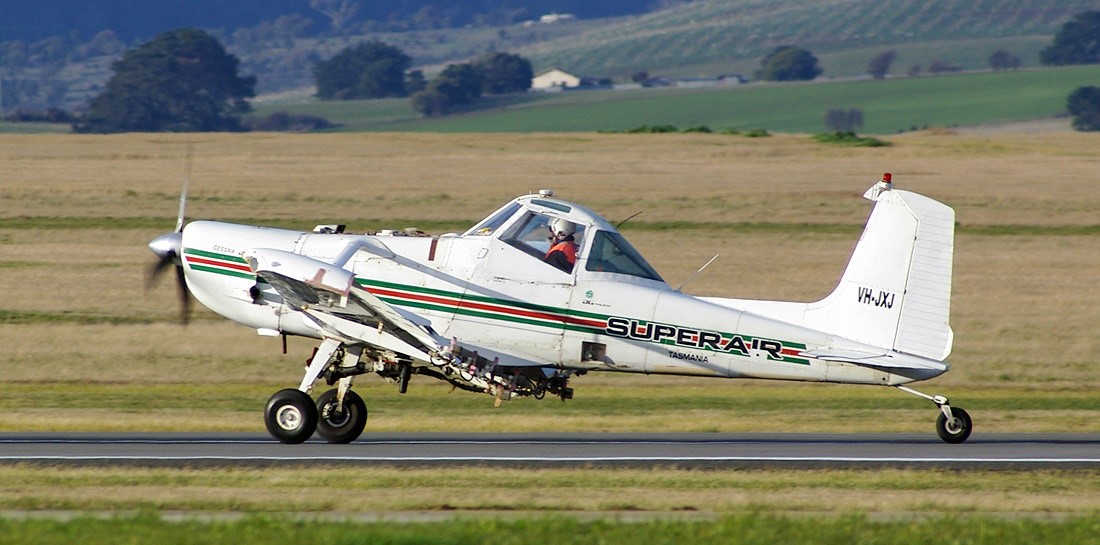 |
||
|
The only other aircraft in the area that was able to assist was a commercial Air New Zealand flight. After several hours of searching, the crew of the Air New Zealand flight located the lost Cessna and led it to Norfolk Island, where the plane landed safely.
Jay Prochnow, a retired US Navy pilot, was delivering a Cessna 188 from the United States to Australia. Prochnow had a colleague who was flying another Cessna 188 alongside him. The long trip would be completed in four stages. On the morning of 20 December, both pilots took off from Pago Pago. His colleague crashed on take off, but was unharmed. Prochnow landed and set out the following day to Norfolk Island.
When Prochnow arrived at the region where he believed Norfolk Island was, he was unable to see the island. He informed Auckland Air Traffic Control (AATC), but at this point there was no immediate danger. He continued searching; after locating more homing beacons from other islands, he realised his automatic direction finder had malfunctioned and he was now lost somewhere over the Pacific Ocean. He alerted AATC and declared an emergency.
|
||
|
WORDS THAT ARE DIFFICULT TO SAY WHEN DRUNK:
Preliminary
|
||
|
There was only one aircraft in the vicinity, Air New Zealand Flight 103, a McDonnell Douglas DC-10 travelling from Fiji to Auckland. The flight had 88 passengers on board. The captain was Gordon Vette, the first officer was Arthur Dovey, and the flight engineer was Gordon Brooks. Vette knew that if they did not try and help, Prochnow would almost certainly die. Vette was a navigator, and at the time of the incident he still held his licence. Furthermore, another passenger, Malcolm Forsyth, was also a navigator; when he heard about the situation he volunteered to help. As neither Prochnow nor the crew of the DC-10 had any real idea of where the Cessna was, the crew had to devise creative ways to find it. By this time, contact between both aircraft had been made on long range HF radio.
Prochnow had crossed the international date line and the date was now 22 December. Vette was able to use the setting sun to gain an approximate position of the Cessna. He instructed the Cessna to point directly at the setting sun. He did the same and noted the difference in heading between the aircraft as four degrees. After making an allowance for the differing altitudes of the aircraft, the difference in sunset times between the aircraft and Norfolk Island was also noted. This data allowed the crew to calculate that the Cessna must be southwest of the DC-10 by about 400 nautical miles. About 25 minutes after turning in that direction, contact on short range VHF radio was established. This had a range of 200 nautical miles. It was hoped the DC-10 would be making a vapour trail to make it more visible. After contacting Auckland it was determined that weather conditions were not suitable for a trail. Brooks knew that by dumping fuel they could produce a vapour trail. As the search was getting more and more desperate, they decided to try it. Prochnow did not see the trail, and it was starting to get dark. Vette wanted all the passengers to be involved, so he asked them to look out of the windows and invited small groups to come to the cockpit.
As it got darker and darker, Prochnow considered ditching, but Vette did not want to give up. So they also used a technique known as "aural boxing" to try to pinpoint the small plane; this took over an hour to complete. Once it had been done, they had a much better approximation of Prochnow's position. The DC-10 used its strobe lights to try to make itself more visible to the Cessna. It took some time, but eventually Prochnow reported seeing light. This was not the DC-10, it was an oil rig, and Prochnow went towards it. This was identified as Penrod, which was being towed from New Zealand to Singapore. This gave Prochnow’s exact position. After some confusion about the exact position of the Penrod, it was finally established that the estimates of the crew of the DC-10 were very accurate. Prochnow was able to make it to Norfolk Island with his remaining fuel. He touched down on Norfolk Island after being in the air for twenty-three hours and five minutes.
Details of how the navigation numbers were crunched by the captain of the Air New Zealand DC10 are HERE. I learned those numbers in case the occasion should ever arise that another ferry pilot may get lost and who knows we may have been able to help. My maths were awful at school and not much better in 1978 so it was probably good luck that I had never had the opportunity to try my calculations for real.
|
||
|
|
||
|
Turkish Airlines.
THIS is a wonderful advert produced by Turkish Airlines – definitely worth a watch.
|
||
|
WORDS THAT ARE DIFFICULT TO SAY WHEN DRUNK: Proliferation
|
||
|
12 Years with DCA in PNG, 8 years at Madang.
Peter Davey.
When I started work in Madang, I wondered what I had got myself into. There were two air ground positions, one looked after the airspace from Madang to Mount Hagen, including Goroka and the Whagi Valley. The other from Mt Hagen west out to Kopiago. One operator had 36 active strips and the other 24. All full traffic, an eye opener after Rabaul.
|
||
|
|
||
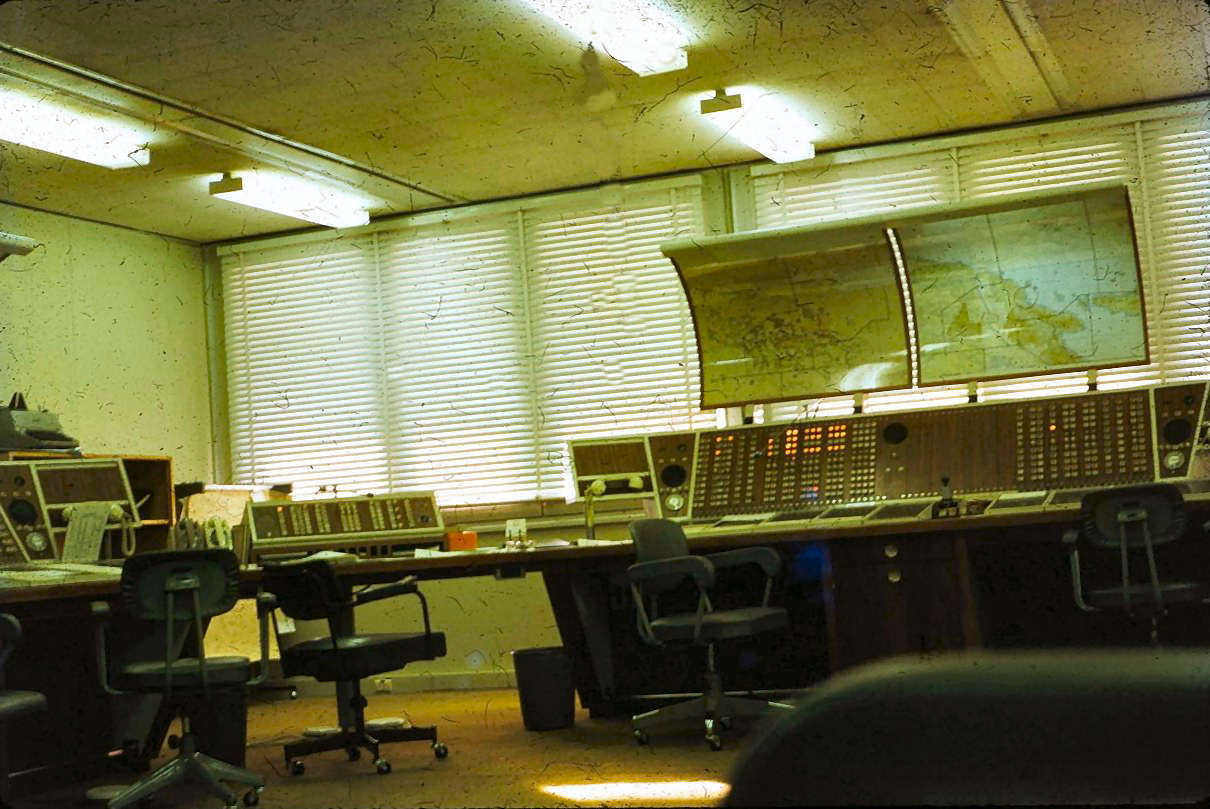 |
||
|
HF operations in Madang’s areas.
As there was no reliable phone through out most of PNG, flight plans were seldom lodged. As with the rest of PNG, all aircraft operated under full reporting and full SAR. We, and the relative aircraft operating agencies, including a large number of missionaries, worked on standard flight plans. There were two, one for twins and the other for single engine aircraft. We always had a strip on the appropriate circuit for the aircraft on the ground. The aircraft would report taxying, or departure with the destination. e.g. Mendi for Tari for a twin it would be 18 minutes at 95 (9,500 ft) and 26 mins for a single. (Every operator and pilot got to know the standard plans). This also worked with the two towers in our area, Mount Hagen and Goroka.
They would call and give a departure e.g. Hagen for Tari. Unless advised we assumed standard details. It worked well. A common amended level would be 500 above ground level not above 10,000. This would made them traffic for any aircraft in the area. If they were flying Tari to Mendi it would be via the Tari Gap. The gap was about 9000 ft. Aircraft often advised marginal VFR and that you could get through at 500 AGL. We would have aircraft each side of the gap trying to get through. With 14,000 ft mountains, aircraft navigated by certain gaps. This also concentrated traffic. It was not uncommon to call up 10 aircraft with traffic on one another. The appropriate strip then needed to have the other 9 aircraft logged as traffic. This would have meant noting 9 different aircraft on each strip. We often just logged VFR.
|
||
|
|
||
|
L-R: Brian Carroll, Trev Benneworth, Bob Taylor, Peter Gorta, Jim Finnigan, Peter Davey. Ex-Madang people at a recent impromptu get together. |
||
|
For my first 4 years all HF was on AM. As we were close to the equator and had mountain ranges over 14,000 feet we experienced a large number of thunderstorms with associated static. AM only has a quarter the signal strength of SSB. Often you had to deselect the CODAN (Carrier operated device – anti-noise) to copy aircraft. All frequencies were shared with at least two other ground stations (Wewak, Moresby, Lae or Rabaul) exclusively all with large number of aircraft (except Madang which had 5631 for the Hagen west (Mendi) area). The HF was crowded with constant jamming. SSB improved communications. Telephones were finally installed through parts of PNG and briefing offices opened at Goroka and Mount Hagen.
In early 1972 the Southern highlands of PNG were hit with massive frosts above 1800 meters, a severity not experienced since 1941, which wiped out the vegetable crops (mainly sweet potatoes) and the administration was faced with 150,000 people dying from starvation combined with widespread public disorder, tribal fighting as people began to migrate to lower areas. It was compared to the Irish potato famine. Starving tribesmen abandoned entire regions. A national emergency was declared. Much of the areas could be reached by road, but only aircraft could service the more remote areas.
The Government instituted a major programme of famine relief which in hindsight has been criticized as an over-reaction. The event soon became known as the “Gaiman Famine” (False famine). In contrast to a similar event what happened in 1941, no one died and few were seriously hungry for long. None the less, the cost of Government intervention was high, and many mistakes were made.
|
||
|
|
||
|
The 1972 event was less severe than 1941 by several orders of magnitude, but to Australian public servants in the highlands it was their first experience of repeated frosts at elevations above 1800 metres. The spectacular destruction of sweet potato gardens by frost and the fear of widespread public disorder and tribal fighting as people began to migrate out of the worst affected areas led to a food relief program, managed by expatriate missionaries and administration officers and carried out with assistance from the Australian Army and Air Force. At the peak of the program, 150,000 people were being fed. A parallel program distributed planting material of English potato and corn seed and collected sweet potato vines from lower altitudes and transported them into frosted areas, to enable the restoration of the food supply as soon as possible.
Following the completion of the food relief program in 1973, a report to the government (published as Waddell 1989) stated that the switch in policy from one that supported local coping in late 1971, to direct intervention by providing food in 1972, was brought about by the severity of the frost and widespread drought, the inability of the Australian administration to judge the severity of the situation because of a lack of knowledge of local agricultural systems, and the widespread belief that the local population had no capacity to cope with the situation. It was suggested that the relief effort had undermined longstanding adaptive strategies maintained by local people to deal with the frost hazard.
A great deal of food was carried free of charge by TAA and Ansett with pilots being offered “a complete amnesty of contractual working conditions” (There were some massive paydays) The Australian government decided to alleviate the situation. Hercules and Caribou from the RAAF were shuttling food into Mendi (the main aircraft Hub for the area) with light aircraft (mainly twin otters) and helicopters taking the supplies to outstations. The army and RAAF supplied over 30 service men to Mendi.
Our HF circuit for the area became practically unmanageable. We were getting more movements out of Mendi (and a number of surrounding airports) than from Port Moresby airport. A Tower was finally situated at Mendi. The aircraft would call Madang taxying and then report departure to us. No departures were given by Mendi. We passed departures to Mendi but never amended levels on inbound tracks or levels, these were supplied by the aircraft when they called Mendi Tower. We would spend two hours at a time on the circuit with a coordinator to pass departures to Mount Hagen and Mendi and to help spot traffic.
Movements 1973:
About 30% of operators who arrived from South could not get rated at Madang they were sent to easier stations. All transfers from the school to PNG were cancelled due to the number of failures
SAM. (SAR, Aerodrome reports, Meteorology).
In PNG, a large number of airports need a report before aircraft were able to land. (often the strip was hardened by hundreds of men marching up and down.) Each morning various stations would call up with strip reports and meteorology. Two stations stand out. Marprick (an isolated aerodrome in Wewak’s area. I think the Patrol Officer thought up his strip reports over a bottle of “Buka Mary” (rum) e.g:
“Marprick is firm with soft patches. Myprick is soft, caution pigs rooting”
The other was Menyamia, a mission strip. The nun had the sexiest voice. When she come on we would put it on loud speaker and all the operators would just listen. To hear her say “94090 82820” etc. was a delight. We always ended up with “say again - good morning”. As there were no phones throughout PNG, we often passed on non aviation messages via the SAM network. Outstations also used it for medical emergency. Before independence, (when Australia was paying) an aircraft was always sent for a medical evacuation. After independence, the outstation had to convince the Doctor that the evacuation was necessary. The two major requests were for retained placentas and “pig bell” a complaint from eating rotten pig meat. They were normally refused because the Doctor thought the patient would die and there were scarce resources. As a supervisor, I spent an inordinate time as the coordinator between SAM and the Doctors.
At Madang we were responsible for rating the first indigenous ATO (Air Traffic operator). By the time I left PNG I had trained every indigenous supervisor.
We had a new OIC at Madang and he decided to have an Aerodrome emergency drill with minimum alerting of staff.
He arranged for a fictitious Fokker to lodge a flight plan Goroka for Madang. (one of the few legs where we could work the aircraft on VHF.). An indigenous operator was on air ground on his second shift since being rated. The F27 (OIC) reported “fire warning light”. No action was taken. Reported Engine on fire. Still no action was taken. The supervisor who knew about the flight (you could monitor all positions from his position) advised the tower and declared a distress phase. The operator in the tower, who had recently arrived from south and could speak no pigeon English, pushed the common call to alert our fire fighters; the hospital; the police and the town fire brigade. Apart from our fire station, none of the others could understand English. The aircraft reported at 30 miles, 28 pob (persons on board) and that he might not make the airport. The town fire truck finally departed for the airport (about 10 km). It rolled on the third corner and took no part in the debacle. The senior grounds man set off an explosive in the scrub the other side of the airport. This meant that our fire trucks had to cross the runway. As they approached the entry gate there was a truck full of locals travelling at an inordinate slow rate trying to work out what was the explosive and smoke. The fire truck tried to pass and took the gate on an angle. The truck got stuck in the gate.
From there on the exercise went down hill at a rate of knots.
|
||
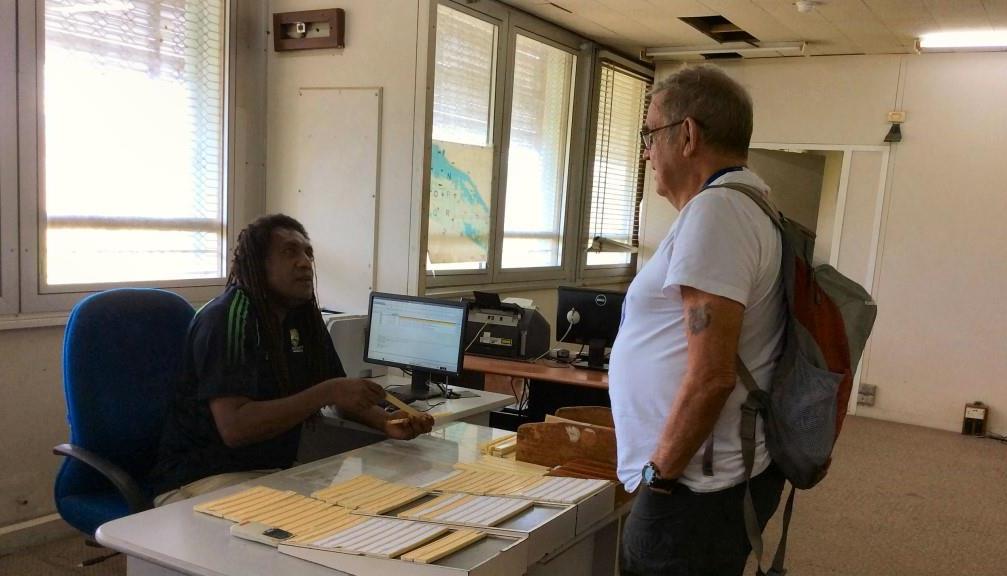 |
||
|
I went back in 2017 for a look-see. I was made very welcome by the local staff and apart from not being nearly as busy as it used to be, I was surprised to see that not a lot had changed since I left - 50 years go.
|
||
|
The indigenous operators were called Air Traffic Officers and carried out the duties of tower and air ground with no distinction except the air ground supervisor was at a higher grade then the tower operator. Operational Control was withdrawn from PNG long before Australia. There was a blending of the various positions. The OIC of the airport was an FSO not ATC.
I had 8 glorious years at Madang. I would have no idea of how many searches I took part in. (in one year we had over 50 deaths in light aircraft accidents) With independence we went on to embassy conditions (we were Australian public Servants working in a foreign country) We were well paid and had some of the best accommodations and conditions in the country.
Madang was the pick of postings in PNG. It had a beautiful harbour dotted with picturesque little sandy islands and as most people owned a boat, or knew someone who did, a lot of spare time was spent on the water, either fishing, skiing or just cruising.
I look back on that time as the best part of my 31 years in DCA. (though the 2 years at Lord Howe took some beating). I had to learn when my garbage tin went out on my return. They said that PNG had the three M’s : Misfits, Missionaries and Mercenaries. I was one or all of those.
|
||
|
|
||
|
A milestone.
Well, it’s finally happened, after many years of going to weddings and various birthdays, recently I was invited to a mate’s 80th, and if that’s not a sure sign that a bloke is aging, nothing is. This was the very first 80th to which I’d been invited and although there was no dancing on tables, no fights and no arrests, we had a great old time – I really enjoyed it. It might have been my first 80th, sadly, in the not too distant future, at this time of life there will be many more.
|
||
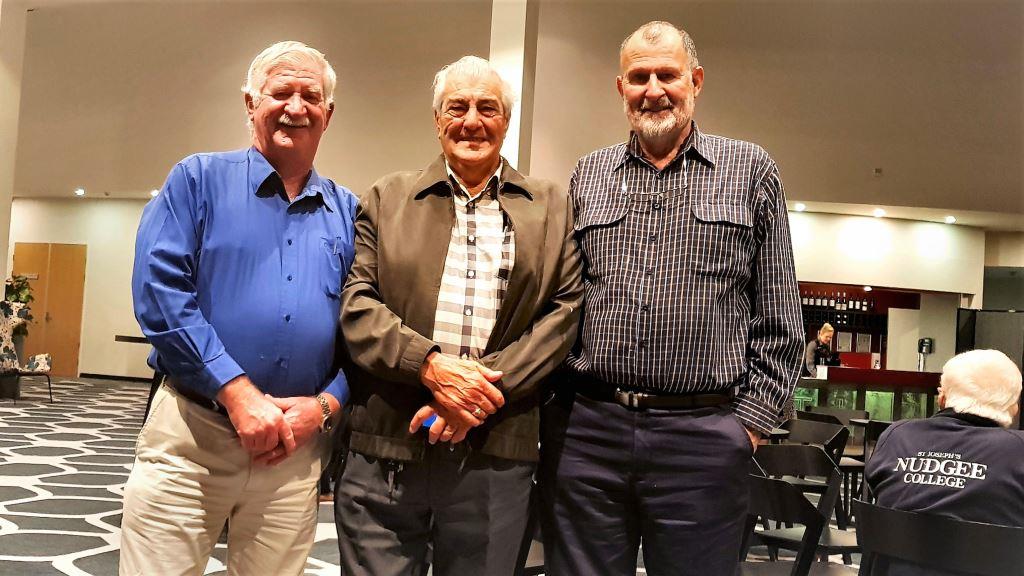 |
||
|
L-R: Trev Benneworth, Geoff Cherry (80), Peter Gorta.
|
||
|
Many moons ago, we worked together at the Madang ATC/Flight Service Centre (in PNG), Pete was the airport OIC and when he wasn't swanning around in the yellow Holden Wagon, he could be found hard at work in the Madang Club or out on the water counting fish while Geoff and I slaved away.
|
||
|
Fire Bomber.
The Coulson Group in Port Alberni on Vancouver Island B.C. CANADA who operate “The Mars Water Bombers” are converting six 747s into fire fighting aircraft. Hopefully these will be ready for this year’s fire season and that the Alberta and other governments will access their services.
See HERE
|
||
|
|
||
|
|
||
|
|
||

